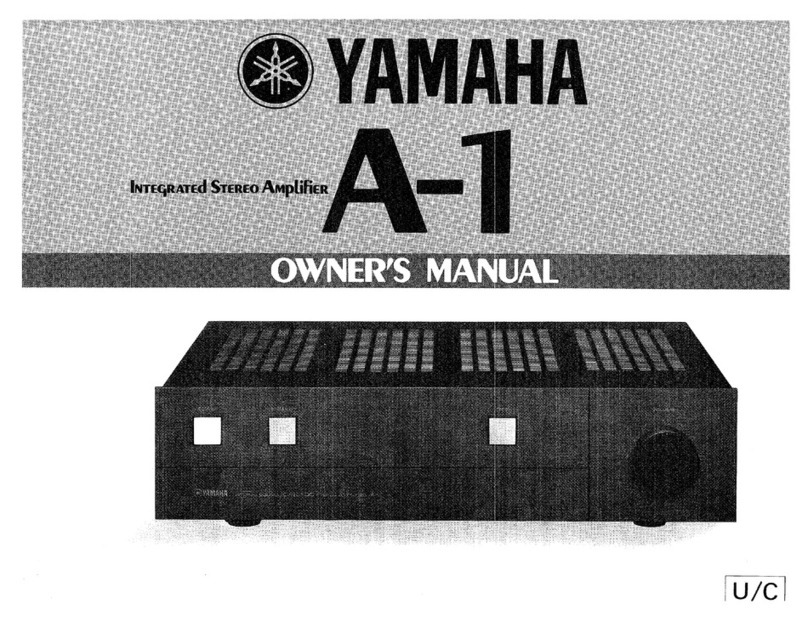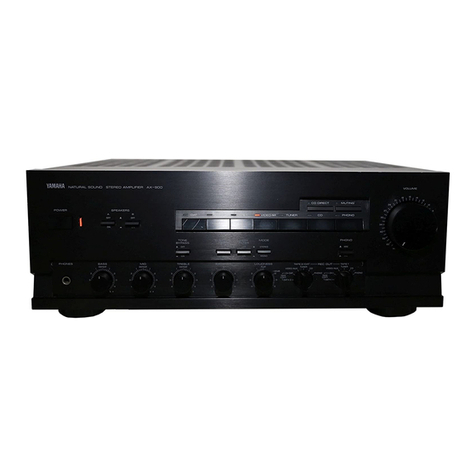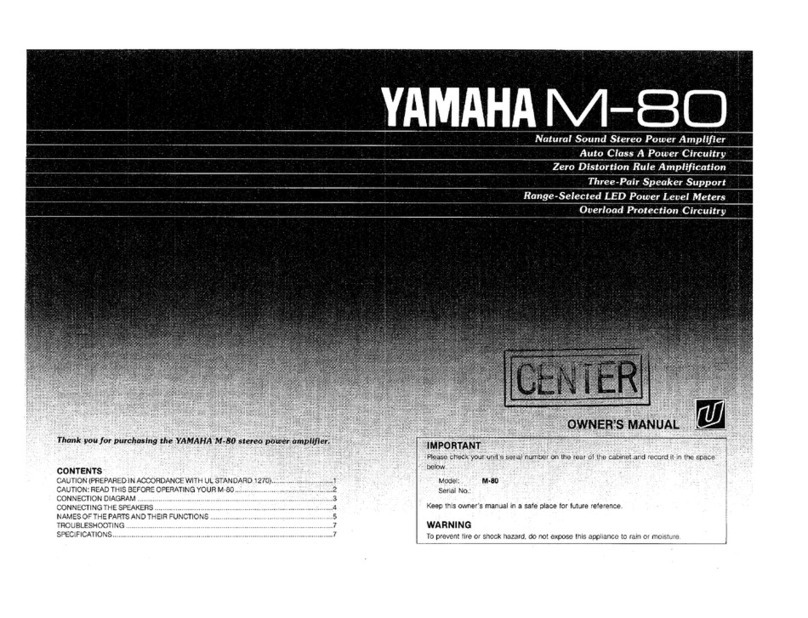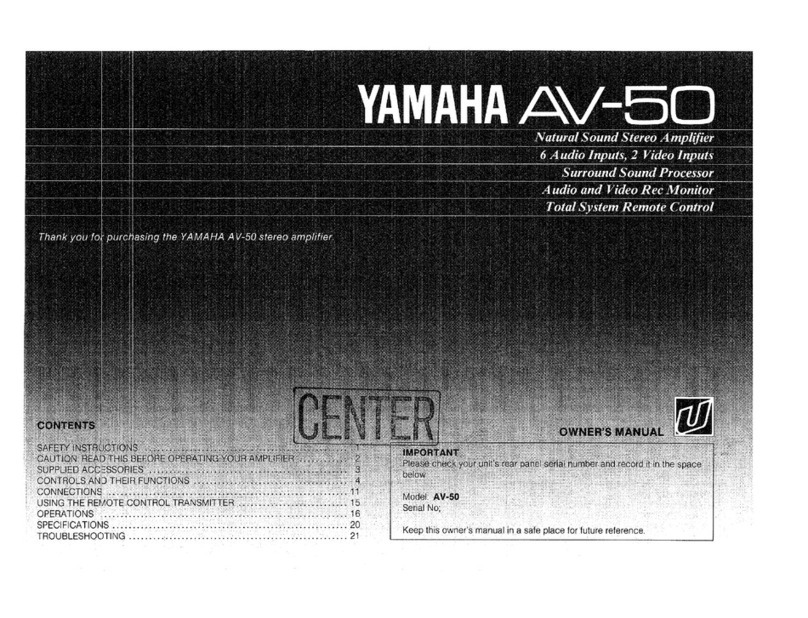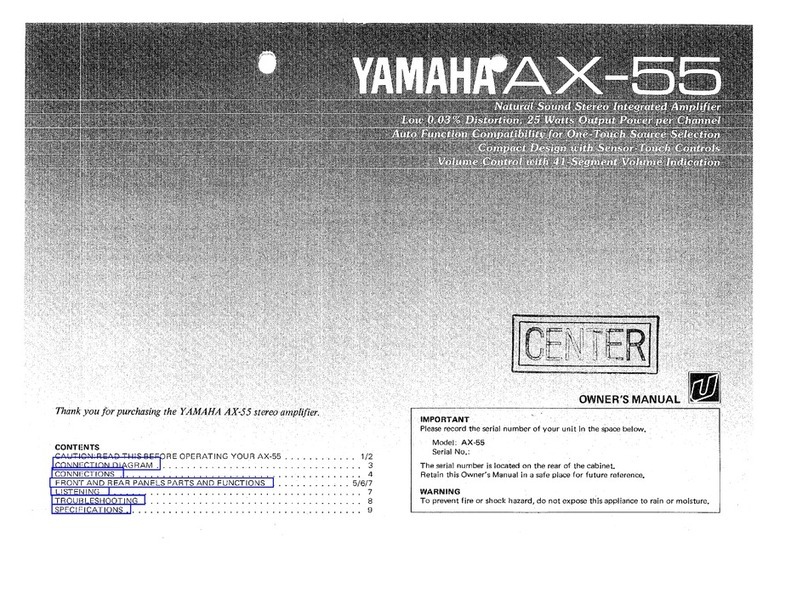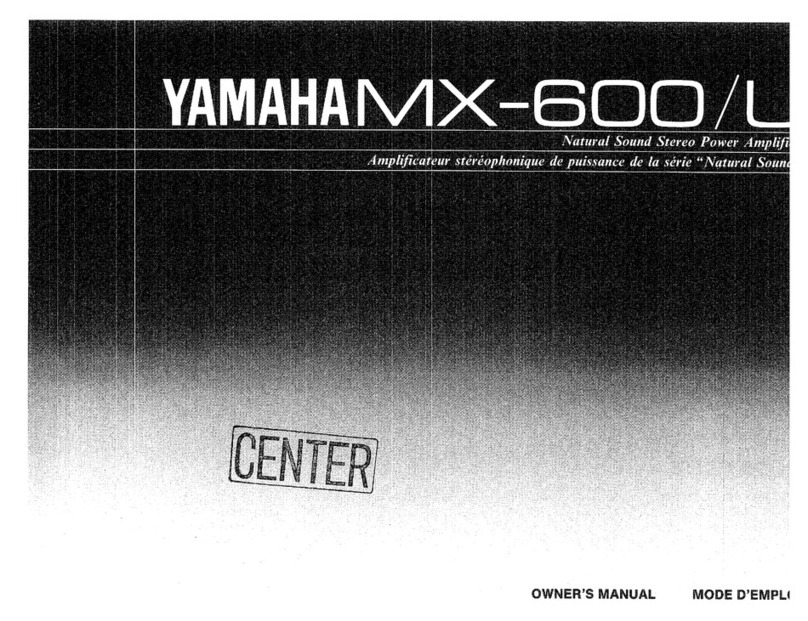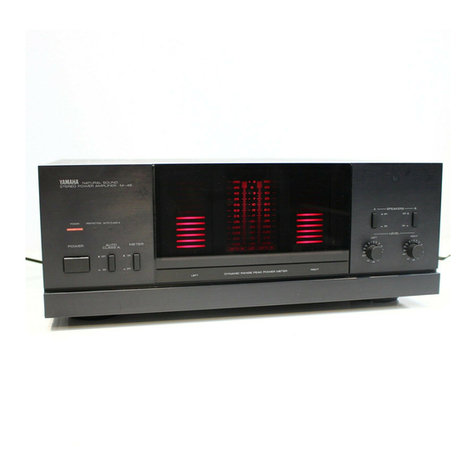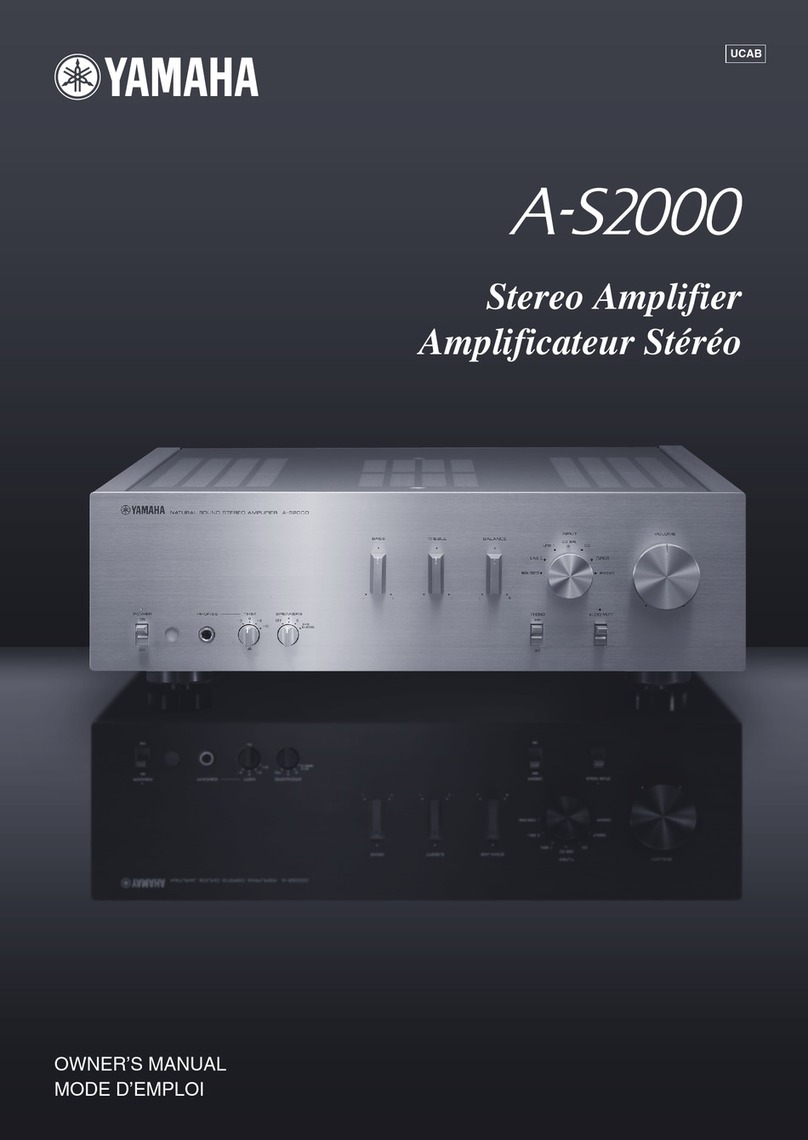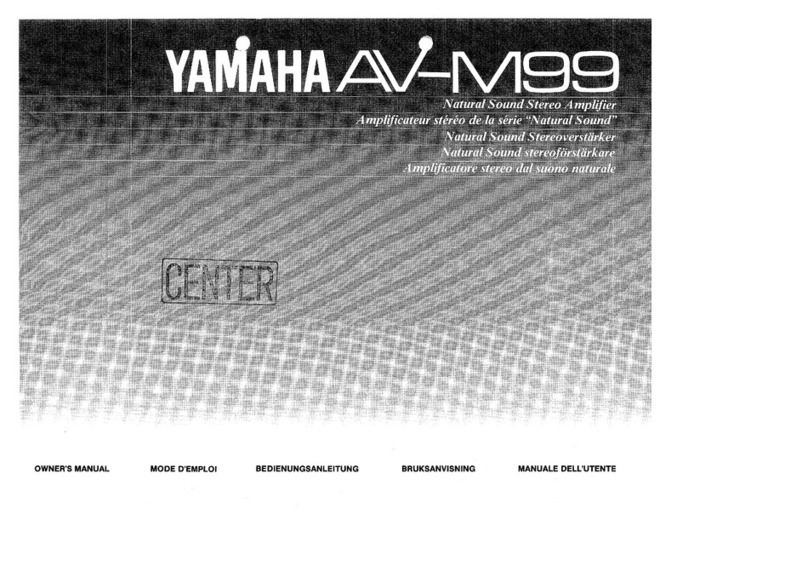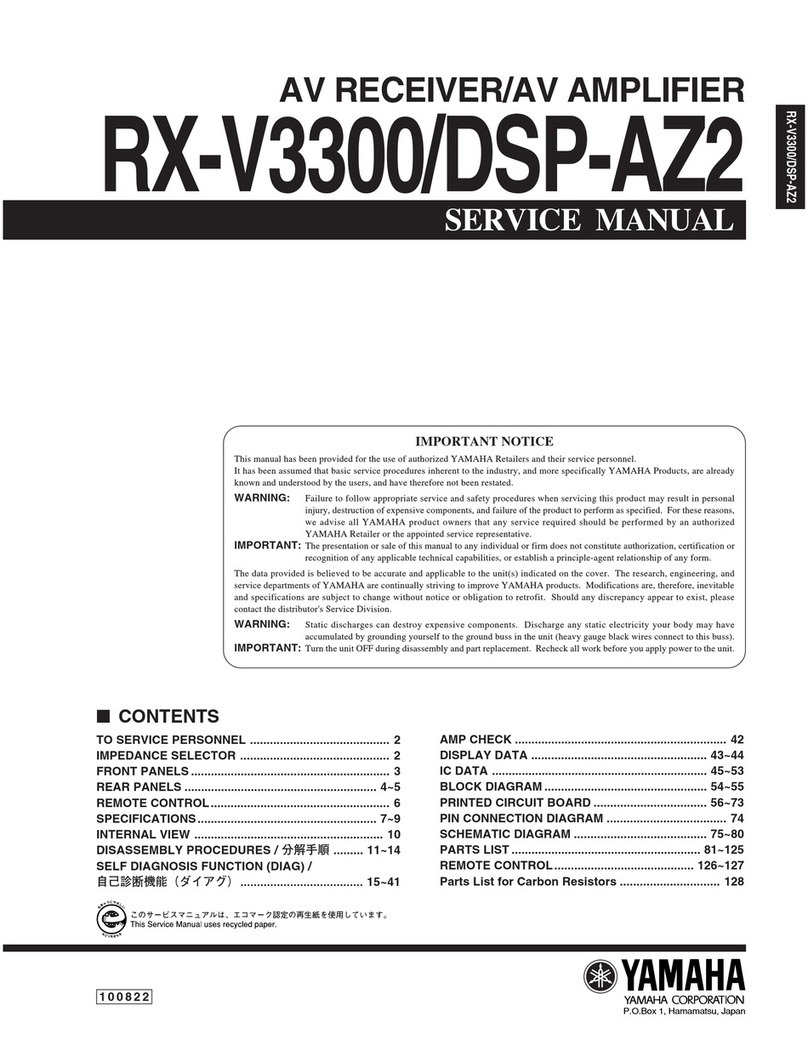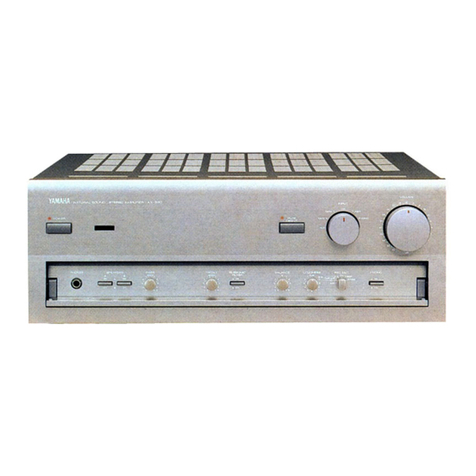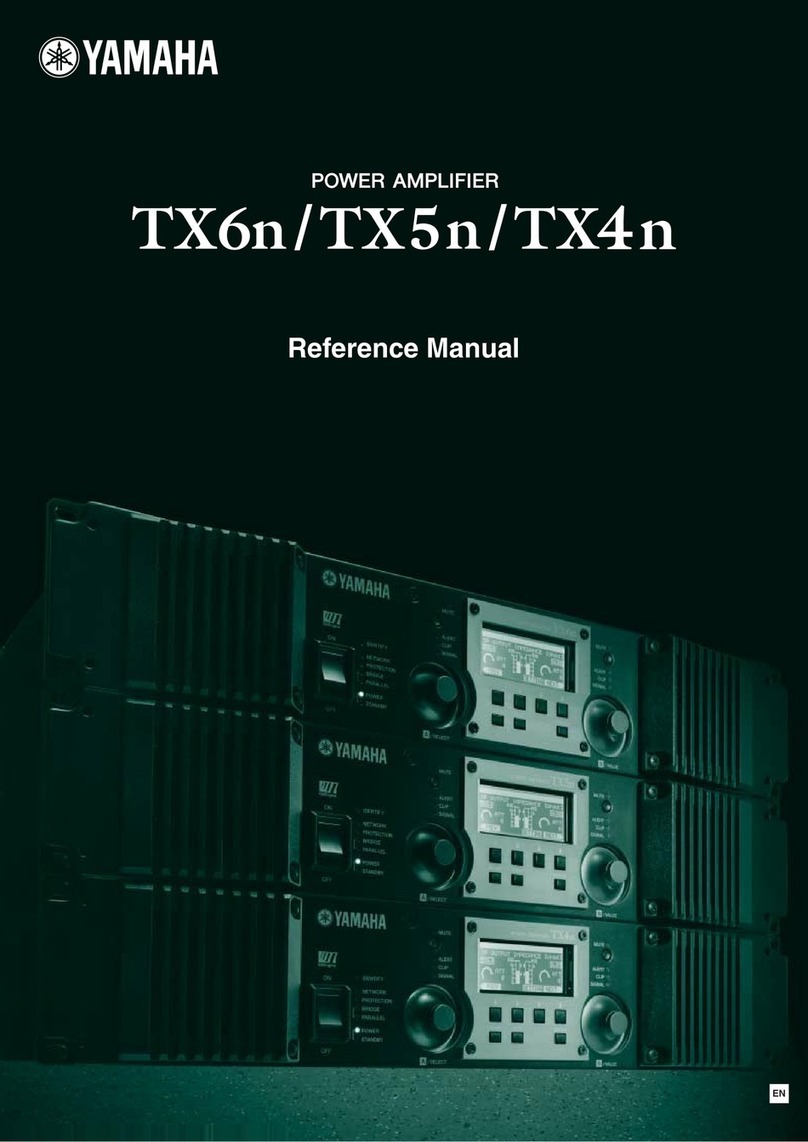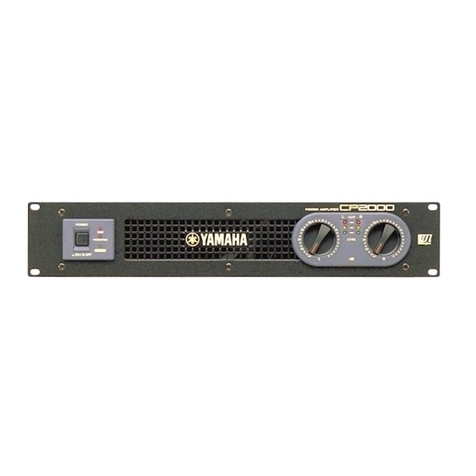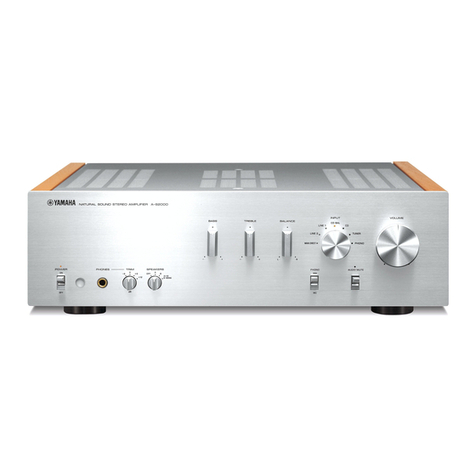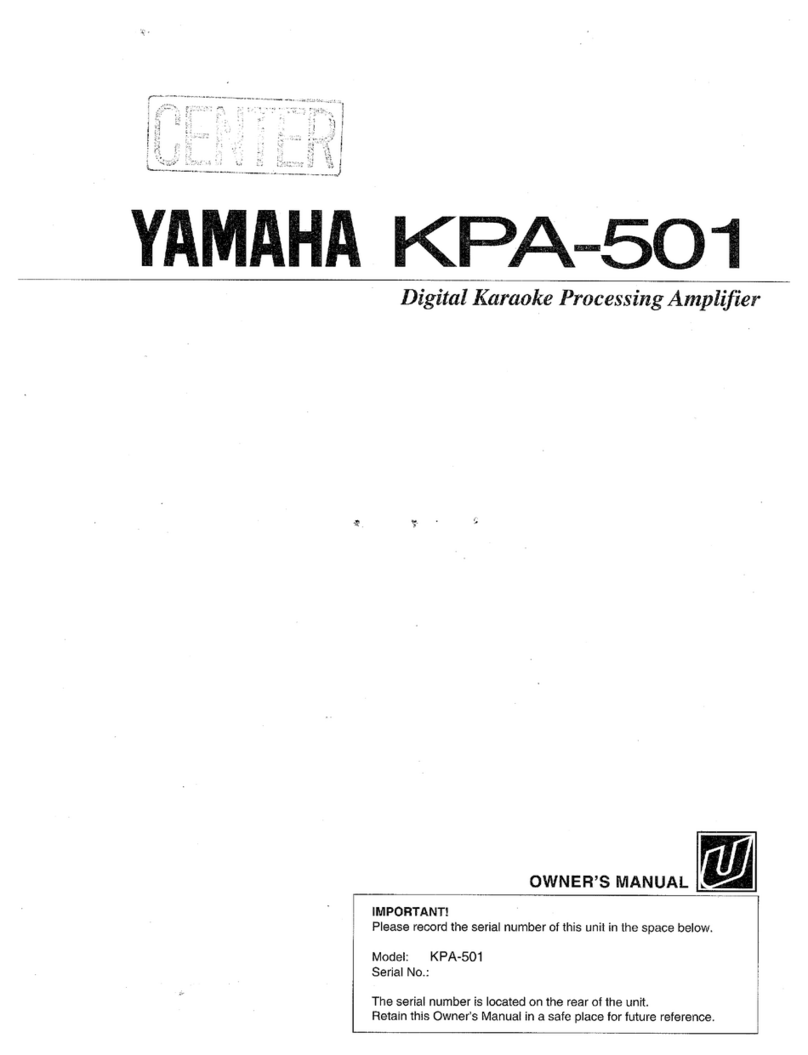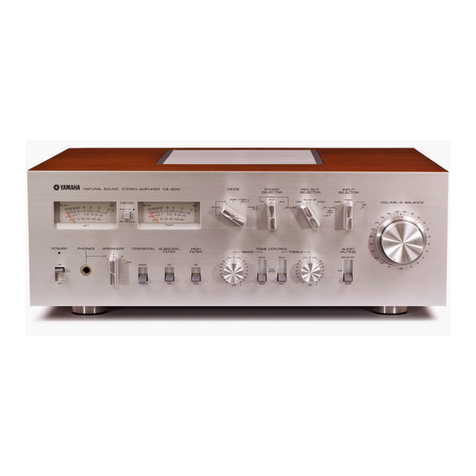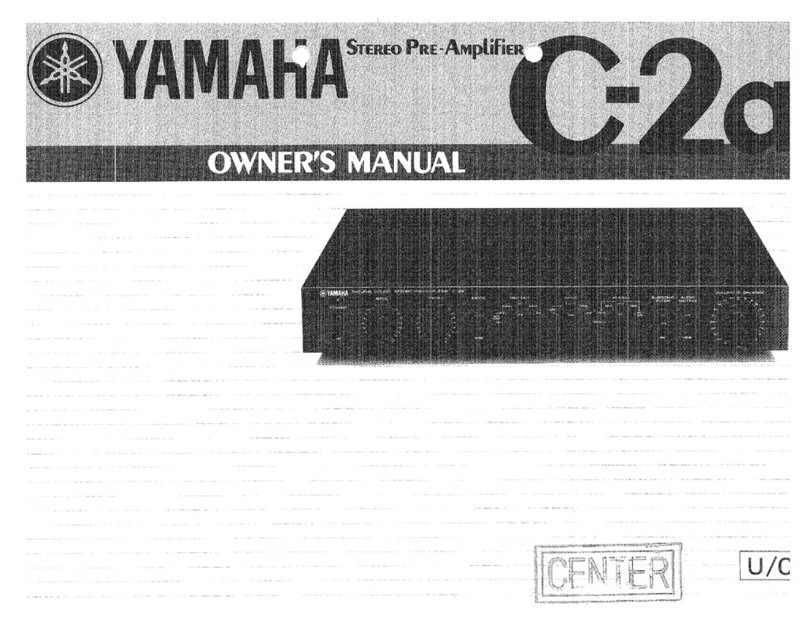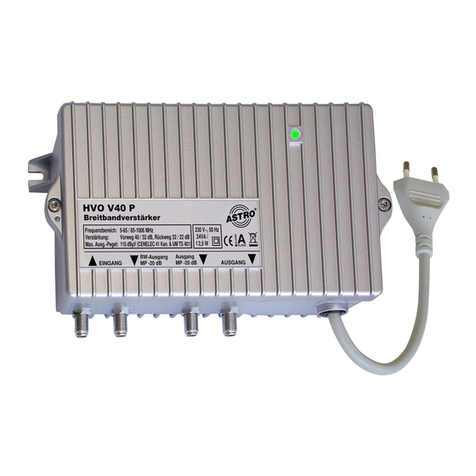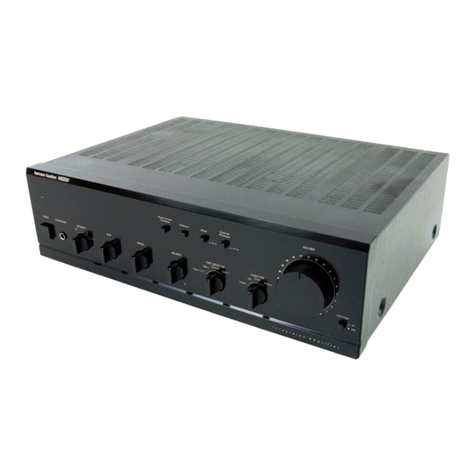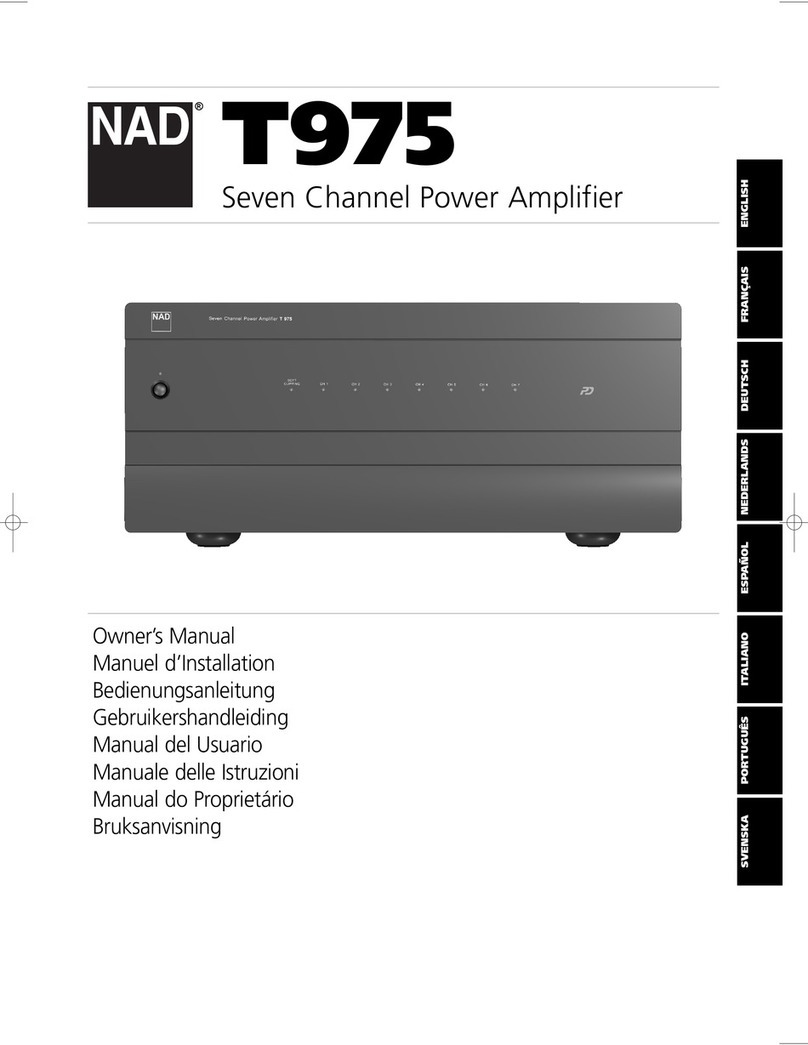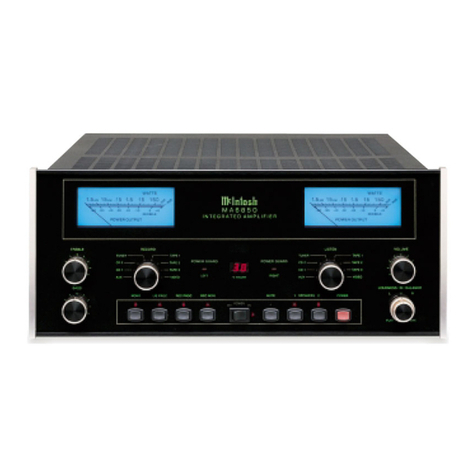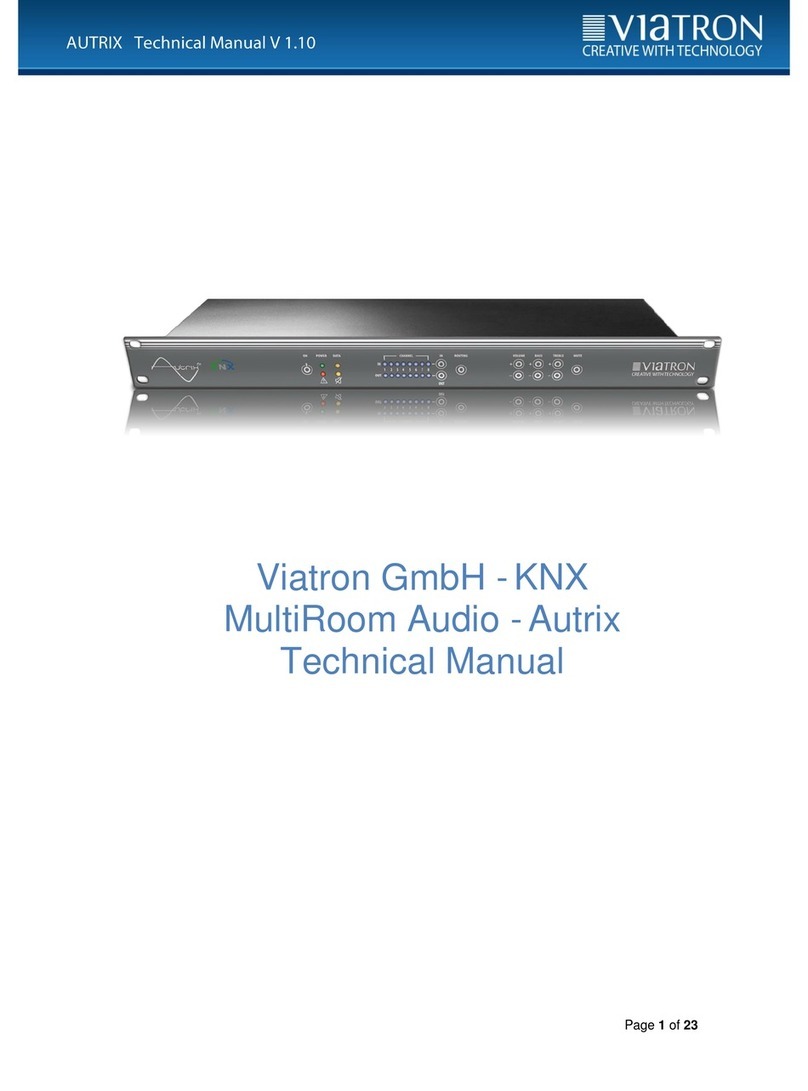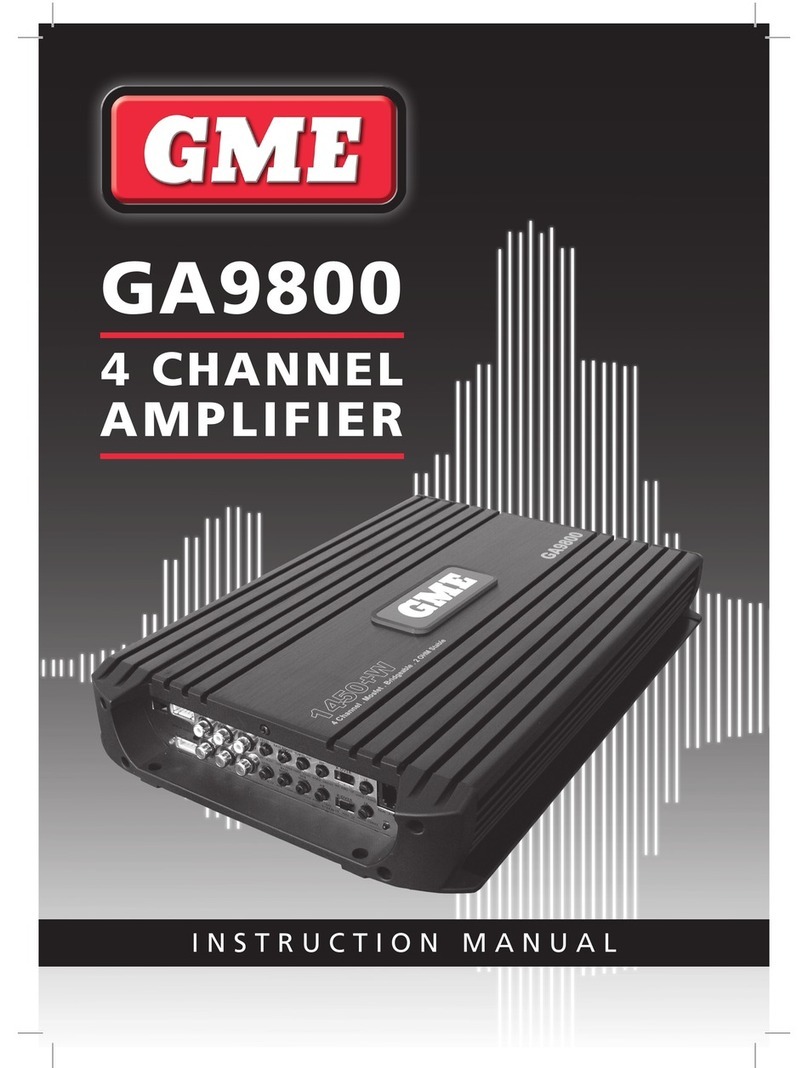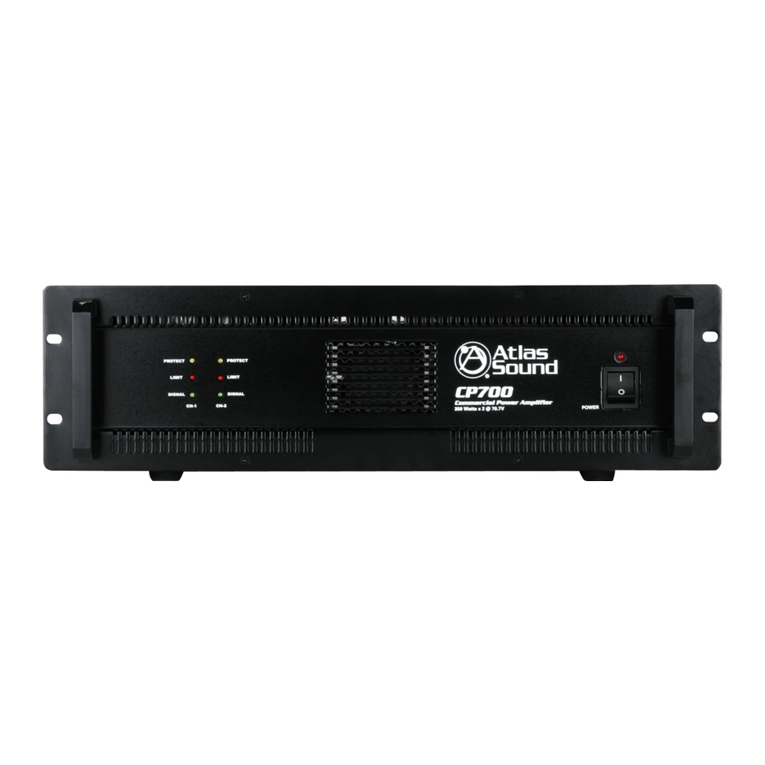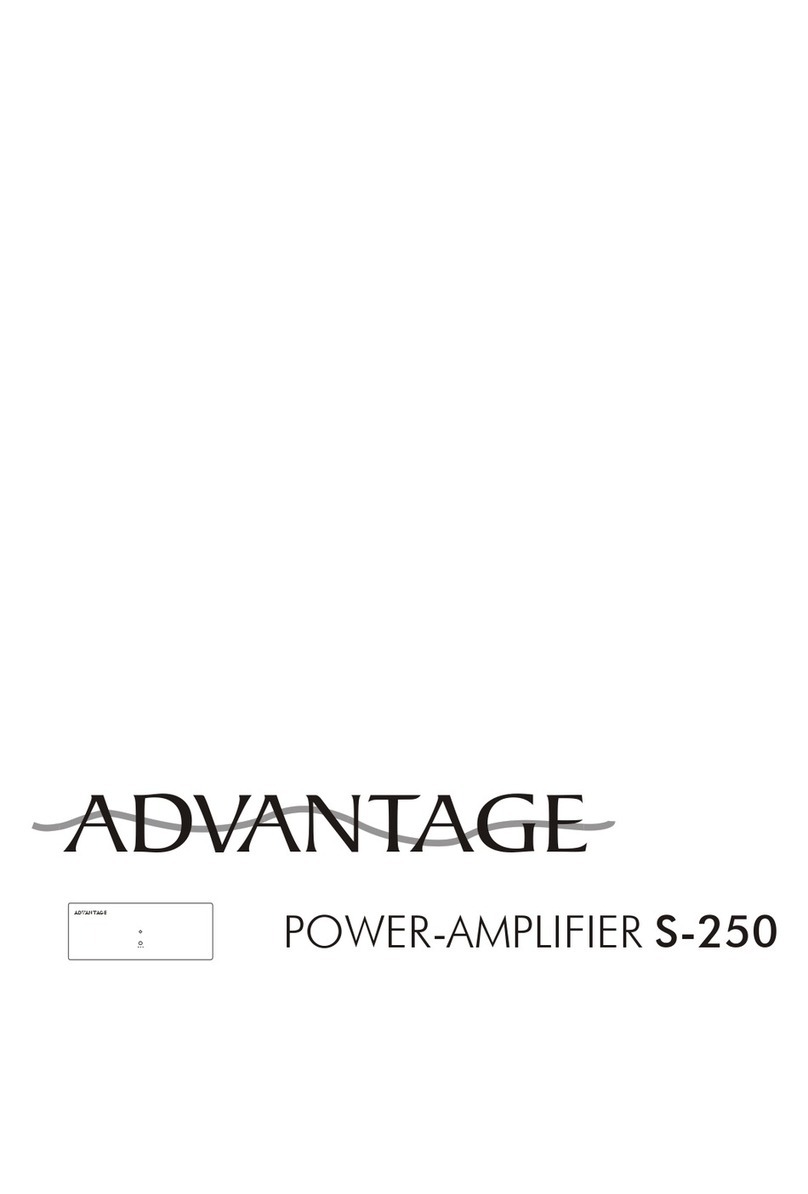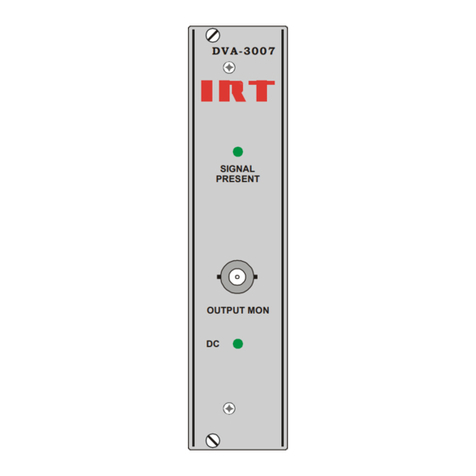2En Features
Features
High-quality power amplifier
■High output/high audio-quality
amplifier (150 W x 11 channels)
The unit provides an 11-channel power amplifier
featuring a three-stage Darlington current feedback
circuit, with a power supply that uses the same type of
toroidal transformer used in top-level hi-fi audio devices.
The gold-plated speaker connectors are also of the
highest quality, delivering high-grade sound.
■Balance and unbalanced
connections are supported
Balanced (XLR) and unbalanced (RCA) input jacks are
provided on all channels, and can be selected
independently for each channel.
Balanced connections minimize the extraneous noise
that can arise in the cable connection between the unit
and the pre-amplifier, ensuring high-fidelity transmission
of the audio signal.
Unbalanced connections utilize ground-sensing to
achieve fidelity that is close to balanced transmission.
■Chassis structure that maximizes
the potential of the unit's
performance
The chassis features a special structure that allows the
full potential of the high-quality power amplifier’s
potential to be revealed.
• Symmetrical power amplifier design
• Aluminum front panel and side panels
• Extremely stable feet utilizing the A.R.T.
(Anti-Resonance Technology)
Expandable to meet diverse needs
■Freedom for speaker placement
Since power amplifiers of the identical specification are
provided for all 11 channels, you use the unit not only
for constructing a home theater setup of up to
11 channels but also for multi-room systems or any
other speaker configuration to meet your needs.
■Support for bi-amp connections
and multi-speaker playback
The unit provides a channel selector function that lets
you utilize bi-amp connections or multi-speaker
connections without having to connect additional
cables from your pre-amplifier. For example, the CH.2
audio input could be output from both the CH.2 and
CH.3 speaker outputs to drive a bi-amp configuration
for high-quality sound, or the CH.1 (monaural) input
could be output from three speakers connected to CH.1
and CH.4 (L/R).
■Switch the unit's power from your
pre-amplifier (trigger function)
The unit can switch its own power status in
synchronization with power switching operations on
another device that supports the trigger function, such
as an AV pre-amplifier (TRIGGER IN). The input signal
from the TRIGGER IN jack can also be output without
change in a cascade connection to switch the power of
another device such as a Yamaha subwoofer
(THROUGH OUT). In addition, another device can be
switched in synchronization when the power of the unit
is switched (TRIGGER OUT), allowing you to set up a
variety of systems with synchronized power switching.
